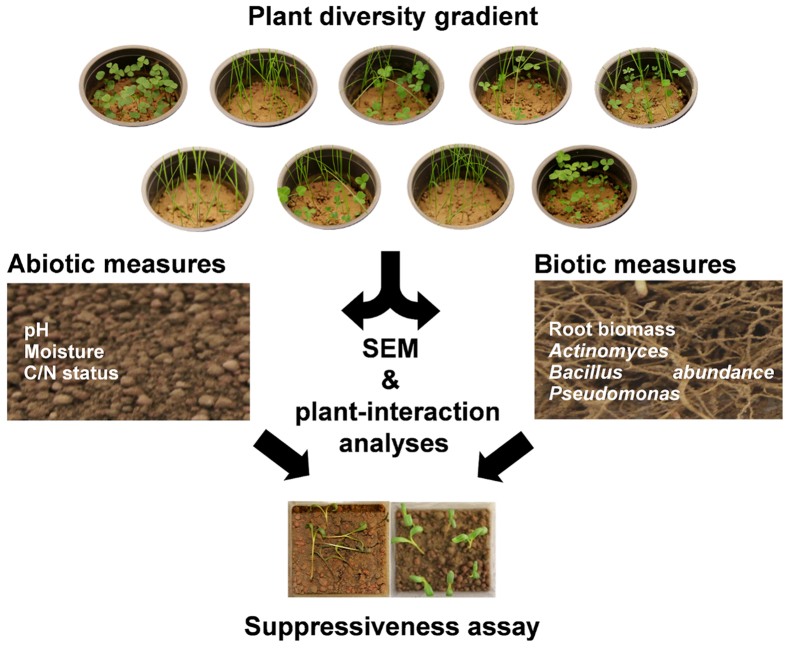Figure 1. Conceptual figure.
Grassland plant communities consisting of one to eight plant species were set up in a substitutive diversity gradient. To increase plant community effects on soil parameters, plant succession was simulated in growth cycles. After the fifth growth cycle, abiotic parameters were measured, plant roots were weighed, and bacterial groups including Actinomyces, Bacillus, and Pseudomonas species were enumerated. Subsequently, the soil was planted with sugar beet seedlings and infested with the model pathogen Rhizoctonia solani, and pathogen suppression was assessed. Pathways linking plant community composition and pathogen suppression were unravelled via structural equation modelling. In addition, plant-plant interaction effects on pathogen suppression were assessed (see methods for details).

